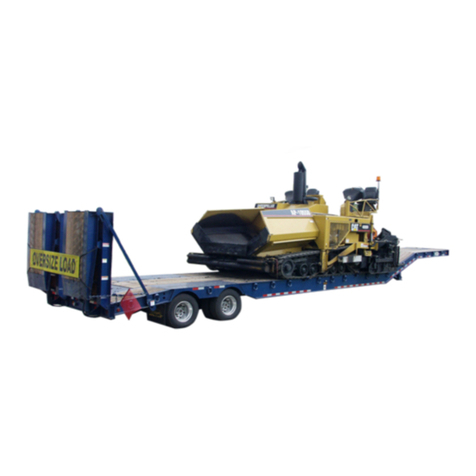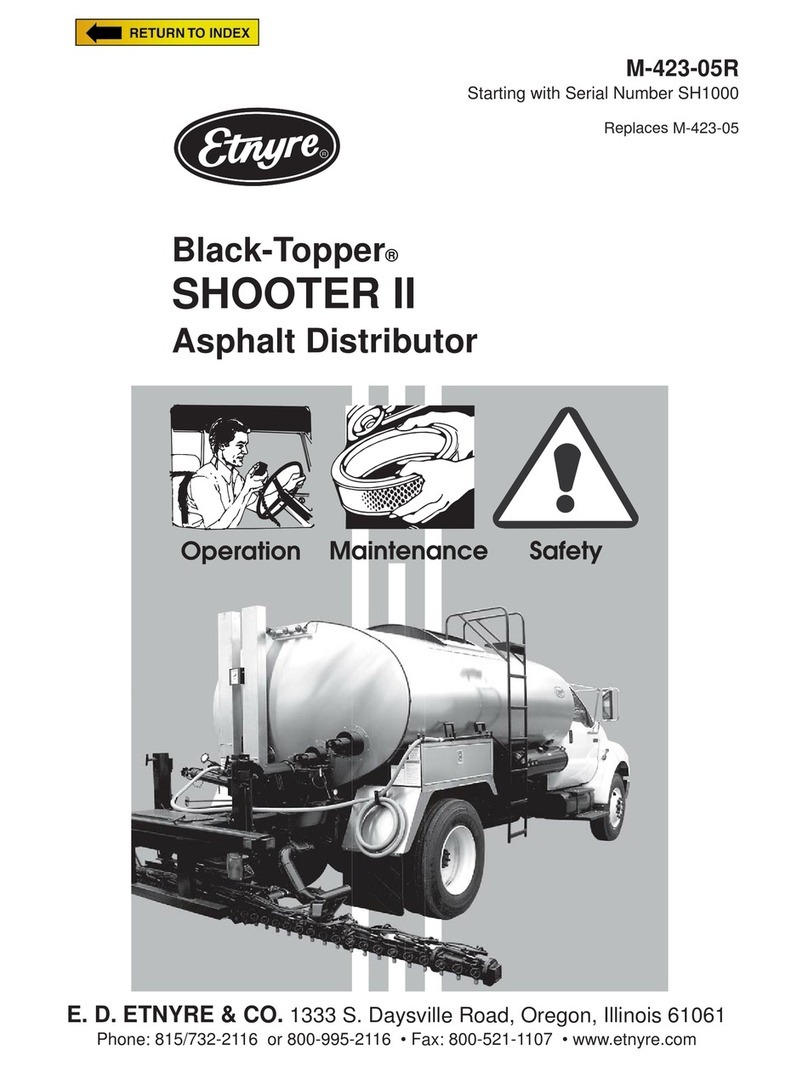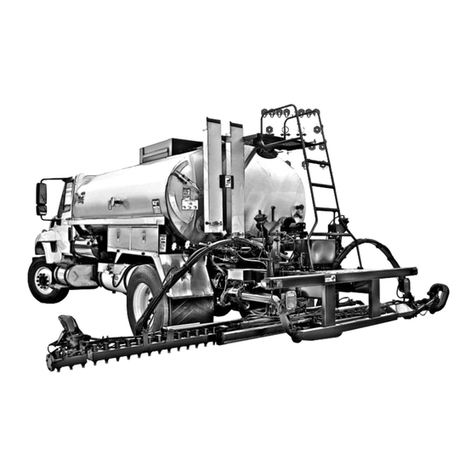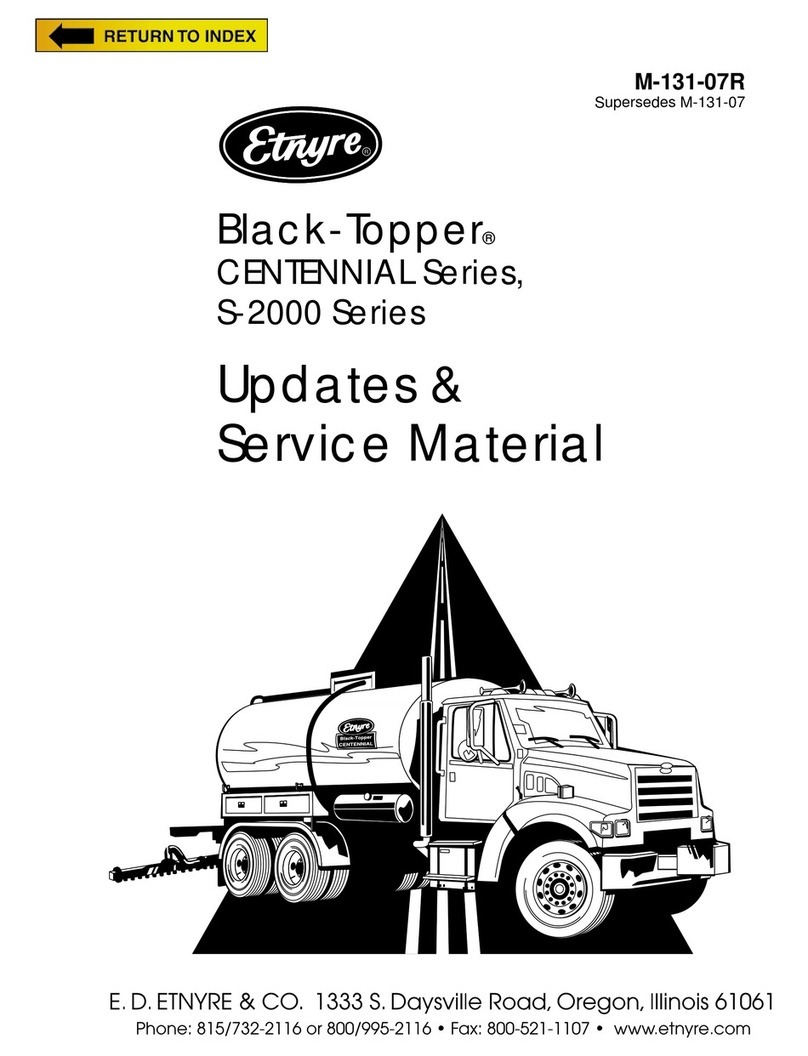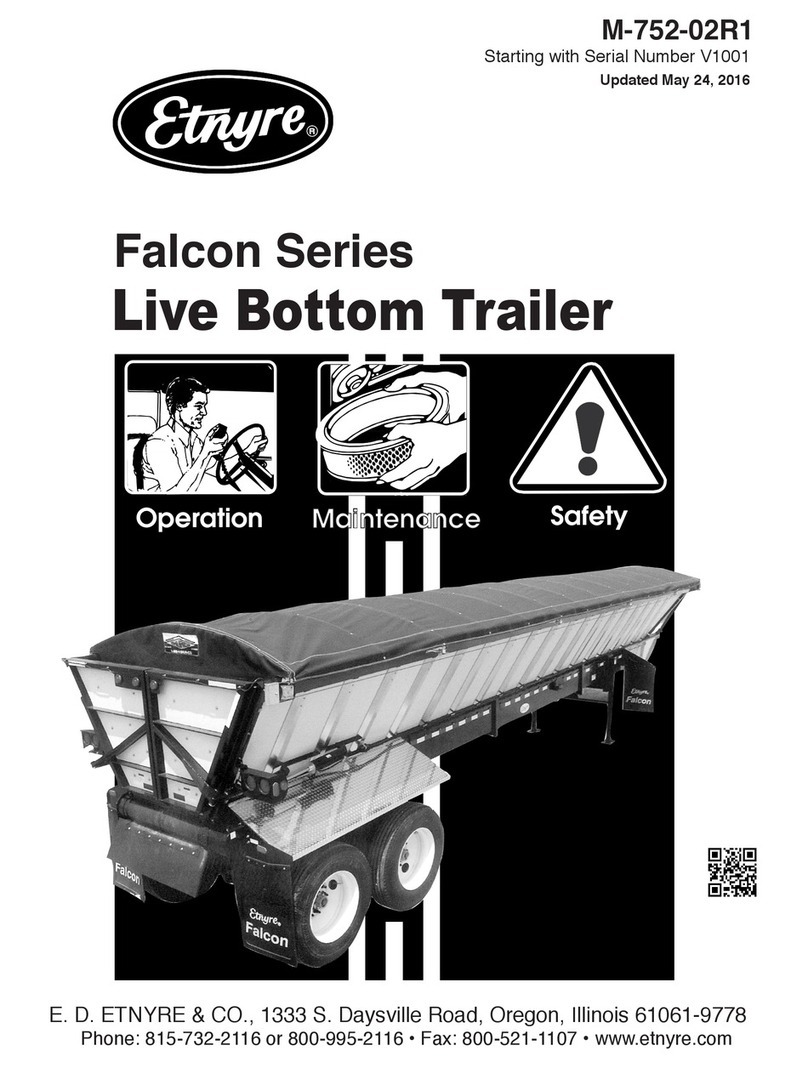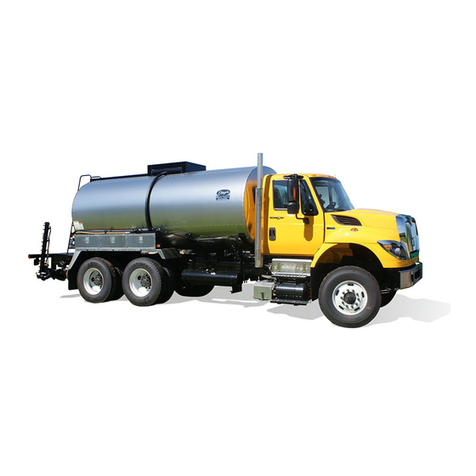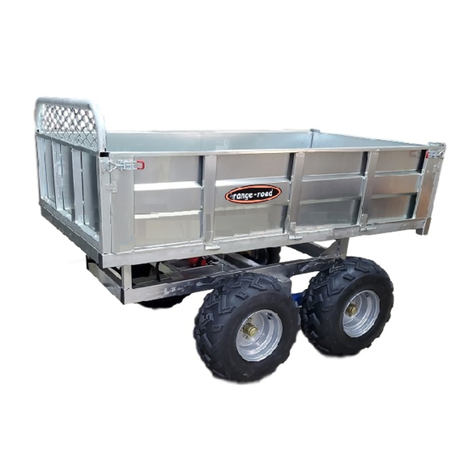
2
GENERAL
Table Of Contents
Warranty............................................................................1
Safety Precautions, ...........................................................4
Hazard Seriousness Level ................................................4
Reporting Safety Defects ..................................................4
General .............................................................................4
Unit Nameplate or Certification Label ...............................5
Serial Number Data ..........................................................5
Trailer Capacity Data ........................................................5
Tire and Rim Data .............................................................5
System Specifications .......................................................5
Operating Instructions .......................................................5
Warning and Caution Information .....................................5
Figure 3. Unit Nameplate and Decals ...............................6
Model RTN35T..................................................................7
Model RTN55T..................................................................7
Table 1. Torque Specifications For Standard Hardware....8
General .............................................................................9
Trailer to Tractor Connecting Procedures .........................9
Gooseneck Removal.......................................................10
Gooseneck Attachment ................................................... 11
Multiple Ride Height Adjustment ..................................... 11
High Lift Gooseneck Operation ....................................... 11
Loading and Unloading Procedures................................13
General ...........................................................................13
Front Loading and Unloading Procedures ......................13
General Rear Loading and Unloading Procedures .........13
Ramps.............................................................................14
Shimming Instructions.....................................................16
Maintenance ...................................................................18
General ...........................................................................18
Table 2. Maintenance Schedule ......................................18
Table 3. Electrodes for Weld Repairs.............................20
Maintenance Procedures ................................................20
Frame Inspection ............................................................20
Weld Repairs...................................................................20
Wheel Bearings...............................................................20
Undercarriage .................................................................21
Service Guide-ridewell Suspensions ..............................21
Basic Operation ..............................................................21
Air Springs & Height Control Valve .................................21
Air Pressure & Brake Protection Valve............................22
Operational Inspection ....................................................22
Preventive Maintenance .................................................22
Welding Guidelines .........................................................23
Welding Methods, Materials & Personnel .......................23
Weld Joint Preparation....................................................23
Welding Procedure..........................................................23
Repair Welding................................................................24
Welding Precautions .......................................................24
Alignment Of Axle For Tandem Axle Trailer.....................25
Height Control Valve .......................................................25
Set Up .............................................................................25
Adjustment ......................................................................25
Valve Replacement .........................................................26
Tires And Disc Wheels ....................................................26
Tire Inflation ....................................................................26
Tire Overinflation .............................................................26
Tire Underinflation ...........................................................26
Matching Dual Tires ........................................................27
Removing Tire and Disc Wheel Assembly ......................27
Mounting and Demounting Tires on Disc Wheels ...........27
Mounting Tire and Hub Piloted Type Disc Wheels ..........27
Checking Tightness on Mounted Dual Disc Wheels .......28
Hubs................................................................................28
Hub Removal ..................................................................28
Inspection and Cleaning .................................................28
Hub Installation ...............................................................28
Air Systems and Brakes..................................................28
Air Systems and Brakes - General..................................28
Air System Tests .............................................................28
Air Reservoir ...................................................................29
Air Hoses and Tubing......................................................29
Brake Relay Emergency Valve........................................29
Air Brake Chambers........................................................29
Brake Air Supply System Description .............................29
Relay Emergency Valve ..................................................30
Brake Chambers .............................................................31
Brake Chamber Servicing ...............................................31
Brake Chamber Removal................................................31
Brake Chamber Disassembly .........................................31
Cleaning and Inspection of Parts ....................................32
Brake Chamber Assembly ..............................................32
Installation .......................................................................32
Air Brakes........................................................................32
General ...........................................................................32
Operating Checks ...........................................................32
Brake Assembly ..............................................................32
Slack Adjuster .................................................................33
Crewson Brunner Automatic Slack Adjuster ...................33
Recommended Preventive Maintenance ........................33
Every Three Months or 25,000 Miles ..............................33
Every Six Months or 50,000 Miles ..................................33
Testing Adjuster Function ................................................33
Slack Adjuster Replacement ...........................................34
Trouble Analysis for Air Brakes .......................................36
Electrical..........................................................................39
Lighting System ..............................................................39
Hydraulics .......................................................................39
General ...........................................................................39
Hydraulic Power Pack Filter ............................................39
Checking Hydraulic Reservoir Oil Level..........................39
Changing Hydraulic Oil ...................................................39
Hydraulic Power Pack Battery ........................................39
Adjusting Relief Pressure................................................40
Trouble Analysis for Hydraulic Systems ..........................40
